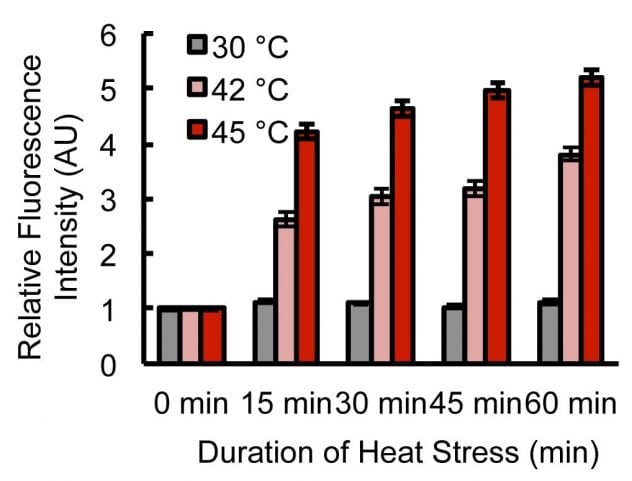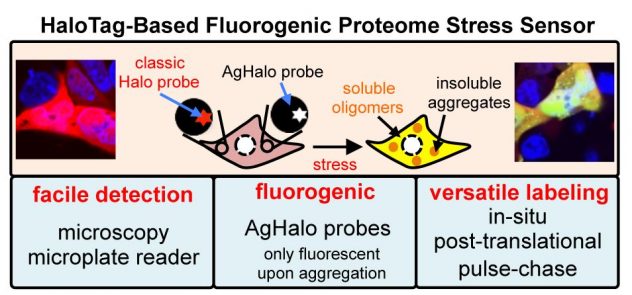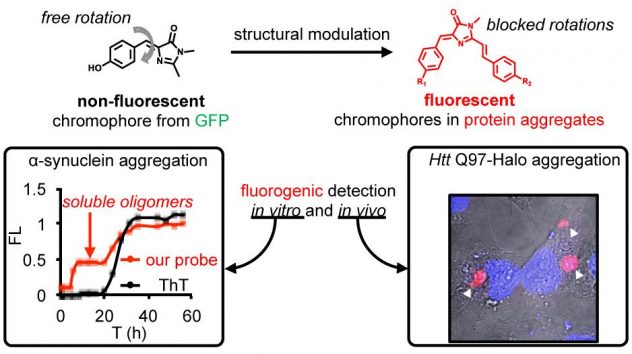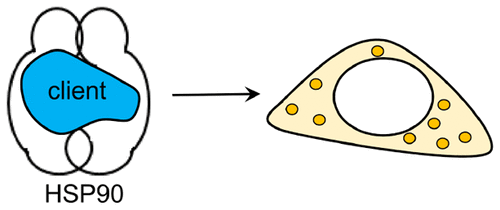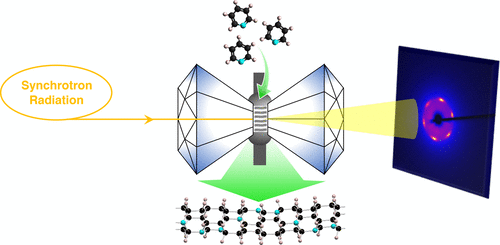Work at Penn State:
(*Corresponding authors, †Authors with equal contributions, ‡Undergraduate and K-12 students)
26. “Generation of pancreatic progenitors from human pluripotent stem cells by small molecules”, in revision.
25. “Stress-induced protein disaggregation in the Endoplasmic Reticulum catalysed by BiP“, in review.
24. “A dual-functional BODIPY-based molecular rotor probe reveals different viscosity of protein aggregates in live cells using fluorescence lifetime imaging”, in revision.
23. S. Tang*†, W. Wang† and X. Zhang*, “Direct visualization and profiling of protein misfolding and aggregation in live cells”, Curr. Opin. Chem. Biol., in press.
22. G. C. Carter, C. Hsiung, L. W. Simpson, H. Yang and X. Zhang*, “N-terminal domain of TDP43 enhances liquid-liquid phase separation of globular proteins“, J. Mol. Biol., 433 (2021), 166948.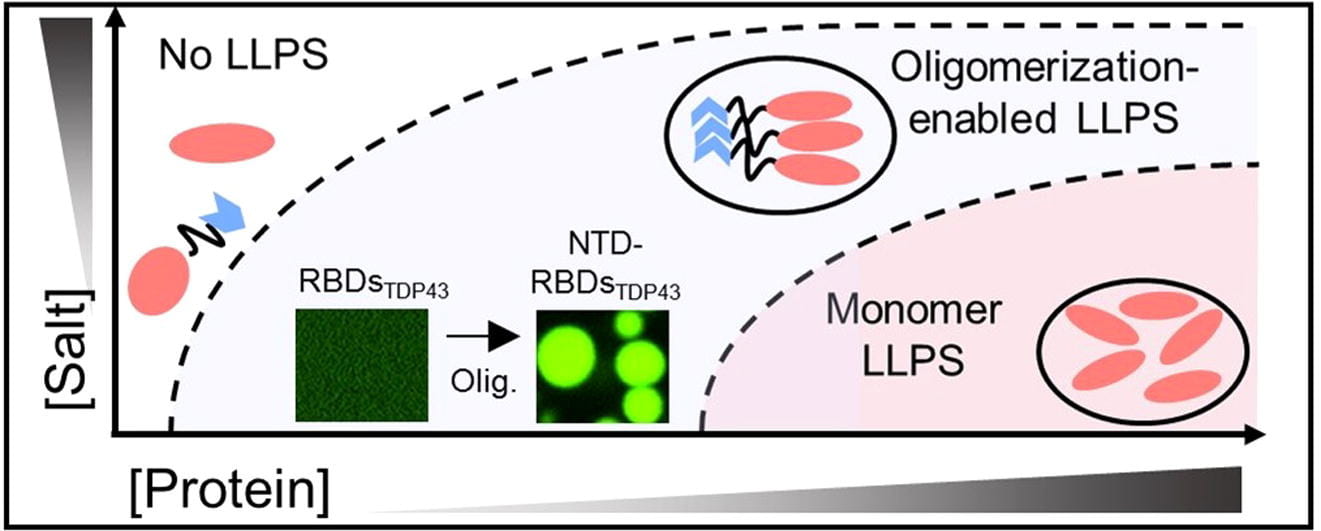
21. S. Tang, S. Ye and X. Zhang*, “When aggregation-induced emission meets protein aggregates”, Nat. Sci. Rev., in press.
20. S. Ye, H. Zhang, J. Fei, C. Wolstenholme and X. Zhang*, “A general strategy to control viscosity sensitivity of molecular rotor-based fluorophores”, Angew. Chem. Int. Ed., 60 (2021), 1339-1346.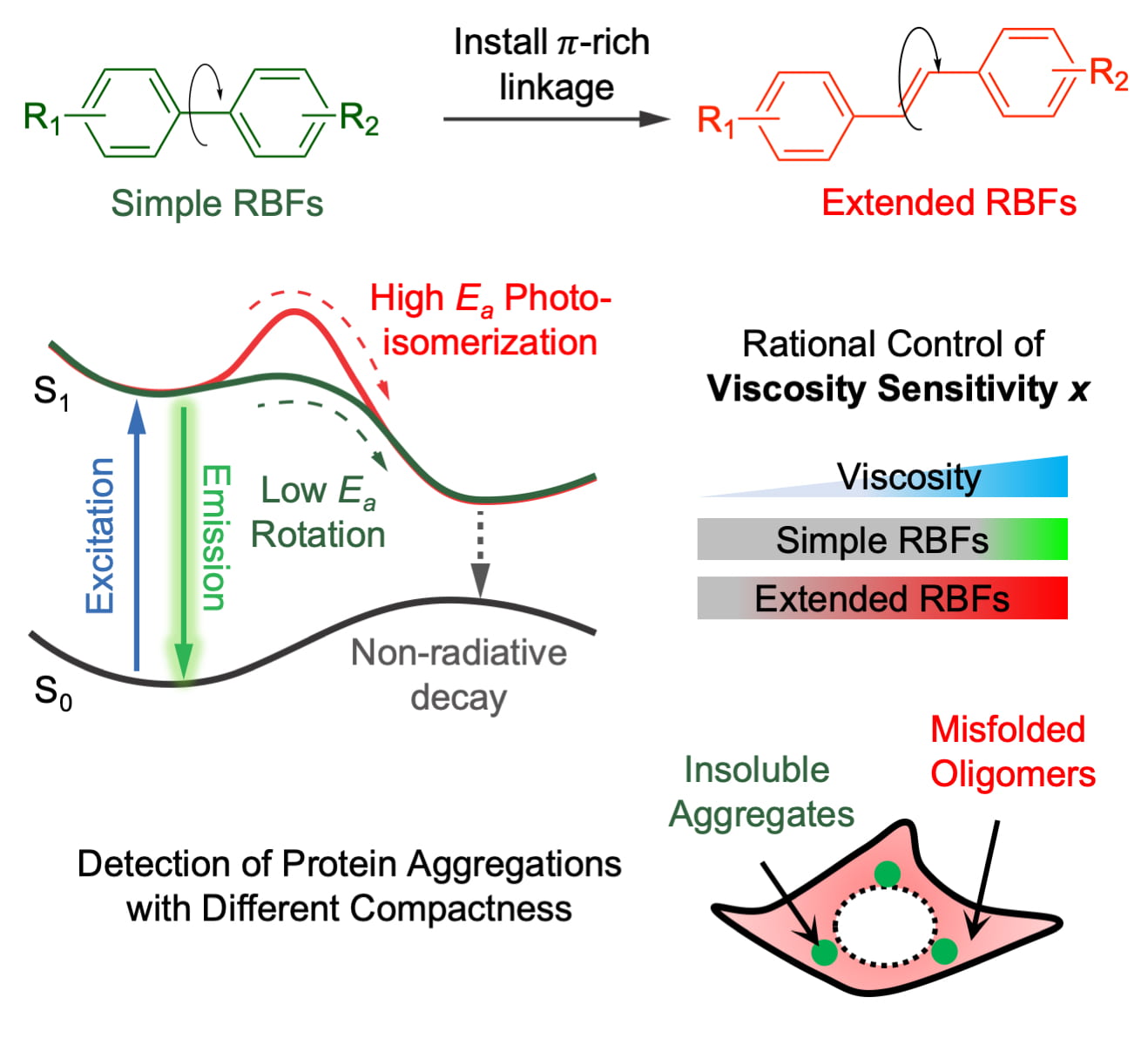
19. C.H. Wolstenholme, H. Hu, S. Ye, B.E. Funk‡, D. Jain‡, C.-H. Hsiung, G. Ning, Y. Liu*, X. Li* and X. Zhang*, “AggFluor: Fluorogenic toolbox enables direct visualization of the multi-step protein aggregation process in live cells”, J. Am. Chem. Soc., 142 (2020), 17515–17523.(highlighted by JACS Spotlights, Protein Aggregation: It’s a Process)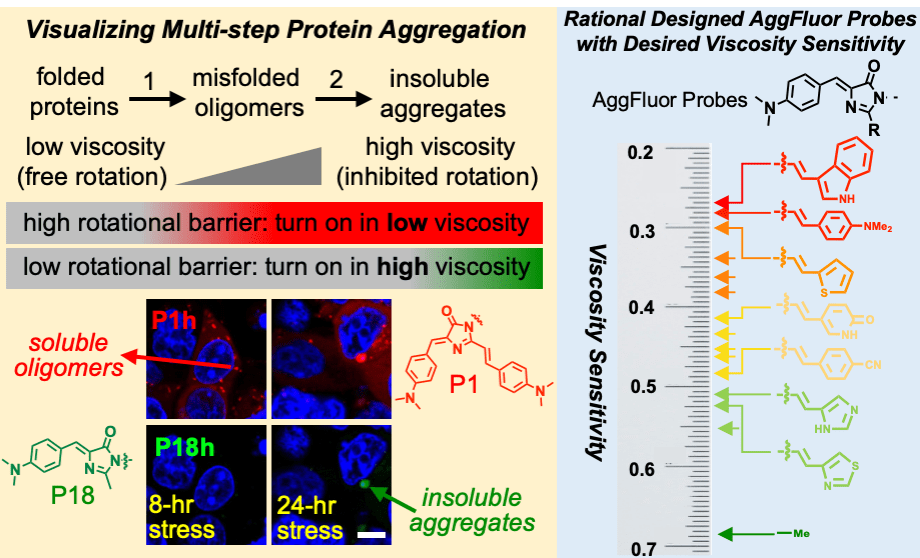
18. C.A. Hoelzel and X. Zhang*, “Visualizing and manipulating biological processes using Halo-Tag and SNAP-Tag technologies“, ChemBioChem, 21 (2020), 1935-1946.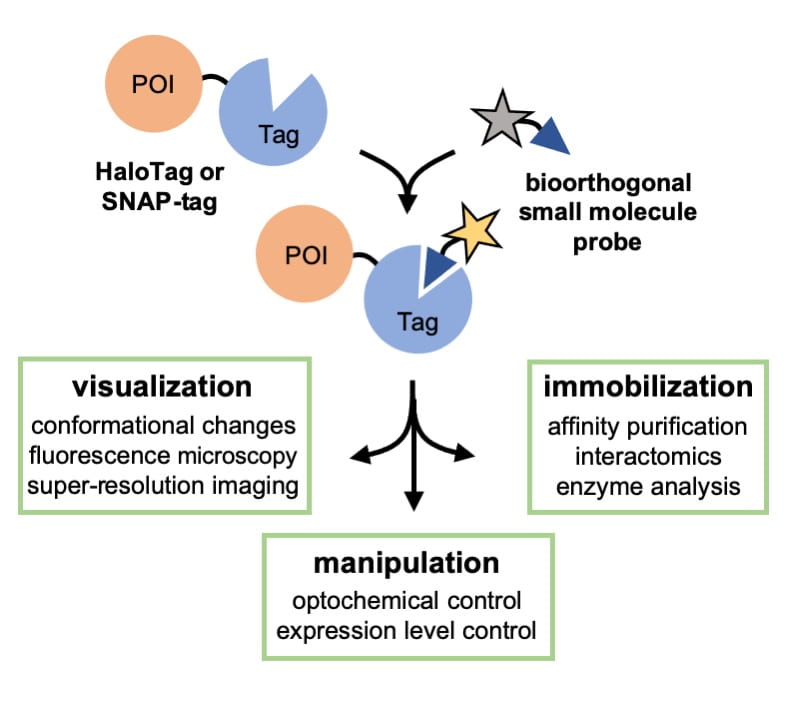
17. K.H. Jung and X. Zhang*, “Fluorogenic detection of protein aggregates in live cells using the AggTag method“, Meth. Enzymol., 639 (2020), 1-22.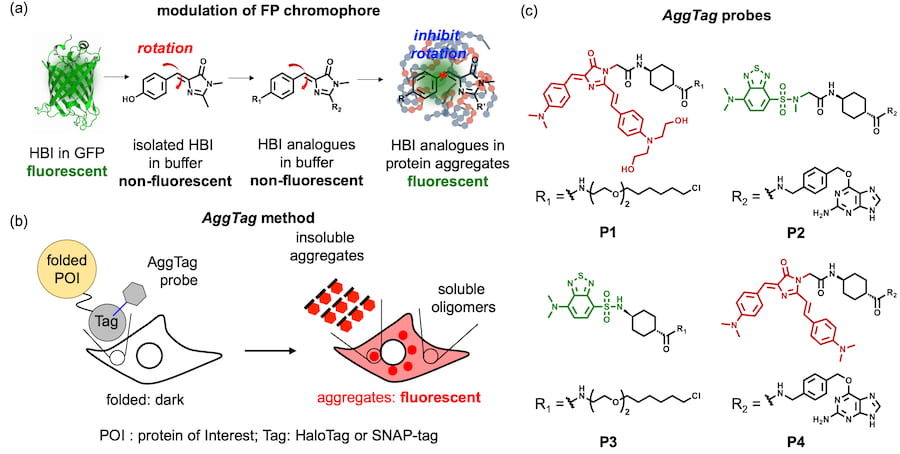
16. C.A. Hoelzel, H. Hu, C.H. Wolstenholme, B.A. Karim‡, K.T. Munson, K. Jung, Y. Liu, H.P. Yennawar, J.B. Asbury, X. Li* and X. Zhang*, “A general strategy to enhance donor-acceptor molecules using solvent-excluding substituents“, Angew. Chem. Int. Ed., 59 (2020), 4785-4792.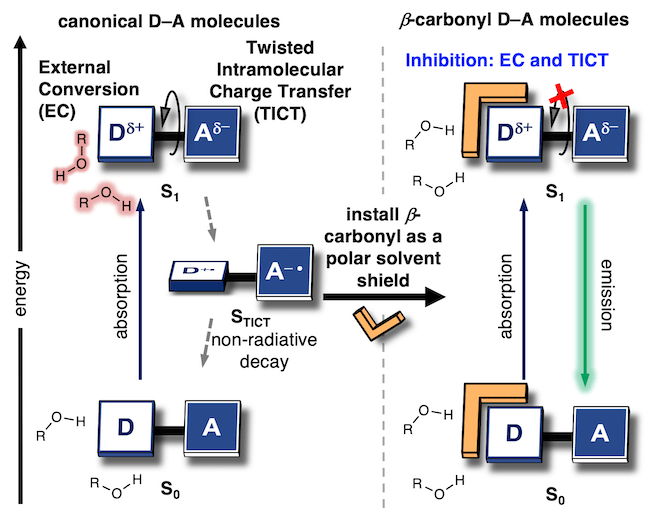
15. S.H. Kim, Y. Liu, C. Hoelzel, X. Zhang* and T.-H. Lee*, “Super-resolution optical lithography with DNA“, Nano Letter, 19 (2019), 6035-6042. Featured by Nat. Chem., Super-resolution writing. 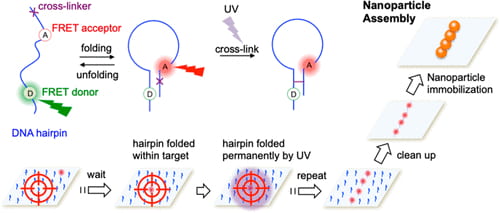
14. K.H. Jung, S.F. Kim‡, Y. Liu and X. Zhang*, “A fluorogenic AggTag method based on Halo- and SNAP-tag to simultaneously detect the aggregation of two proteins in live cells“, ChemBioChem, 20 (2019), 1078-1087. Part of the ChemBioTalents Special Issue.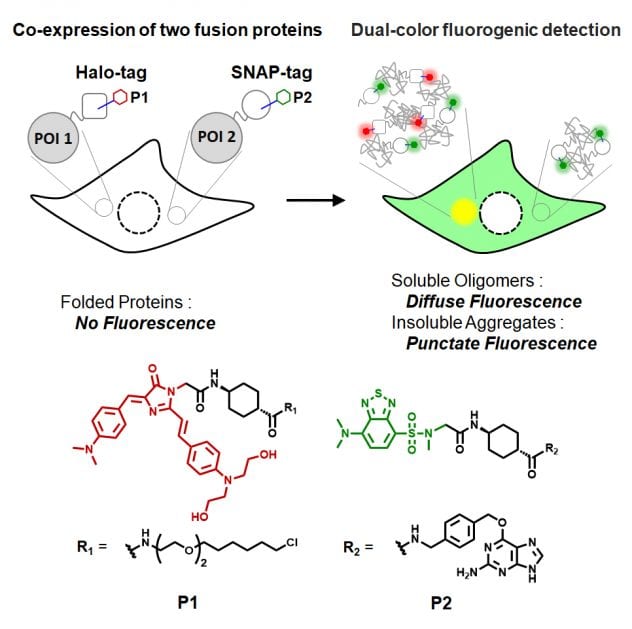
13. K.H. Jung, M. Fares, L.S. Grainger, C.H. Wolstenholme, A. Hou‡, Y. Liu and X. Zhang*, “A SNAP-tag fluorogenic probe mimicking the chromophore of the red fluorescent protein Kaede“, Org. Biomol. Chem., 17 (2019), 1906-1915. Part of the New Talent Special Issue.
12. Y. Liu, M. Fares and X. Zhang*, “Monitoring proteome stress in live cells using HaloTag-based fluorogenic sensor”, Methods Mol. Biol., 1873 (2019), 171-182.
11. M. Fares and X. Zhang*, “Quantification of cellular proteostasis in live cells using the AgHalo sensors“, Curr. Protoc. Chem. Biol., 2018:e58.
10. H. Hu, C.H. Wolstenholme, X. Zhang* and X.S. Li*, “Inverted solvatochromic stokes shift in GFP-like chromophores with extended conjugation“, Chin. J. Chem. Phys., 31 (2018), 599-607.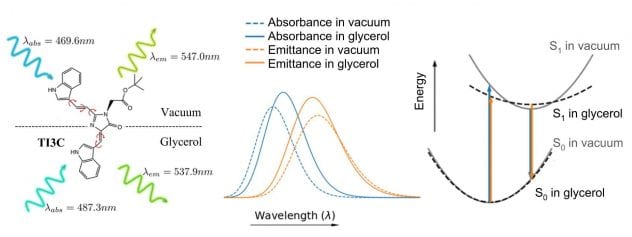
9. Y. Liu, K. Miao‡, Y. Li, M. Fares, S. Chen‡ and X. Zhang* “A HaloTag-based multi-color fluorogenic sensor visualizes and quantifies proteome stress in live cells using solvatochromic and molecular rotor-based fluorophores“, Biochemistry, 57 (2018), 4663-4674. Part of the Special Issue on Discovering New Tools.
8. B.I. Leach, X. Zhang, J.W. Kelly, H.J. Dyson and P.E. Wright*, “NMR measurements reveal the structural basis of transthyretin destabilization by pathogenic mutations“, Biochemistry, 57 (2018), 4421-4430.
7. Y. Liu, C.H. Wolstenholme, G. Carter, H. Liu, H. Hu, L.S. Grainger, K. Miao‡, M. Fares, C.A. Hoelzel, H. Yennawar, G. Ning, M. Du, L. Bai, X. Li and X. Zhang*, “Modulation of fluorescent protein chromophores to detect protein aggregation with turn-on fluorescence“, J. Am. Chem. Soc., 140 (2018), 7381-7384.![]()
6. A. Pedley, G. Karras, X. Zhang, S. Lindquist and S. Benkovic*, “The role of HSP90 in the regulation of de novo purine biosynthesis“, Biochemistry, 57 (2018), 3217-3221.
5. X. Li, T. Wang, P. Duan, M. Baldini, H. Huang, B. Chen, S. Juhl, D. Koeplinger, V. Crespi, K. Schmidt-Rohr, R. Hoffmann, N. Alem, M. Guthrie, X. Zhang and J. Badding*, “Carbon nitride nanothread crystals derived from pyridine”, J. Am. Chem. Soc., 140 (2018), 4969-4972.
4. Y. Liu and X. Zhang*, “Heat shock protein reports on proteome stress”, Biotechnology J, 13 (2018), 1800039.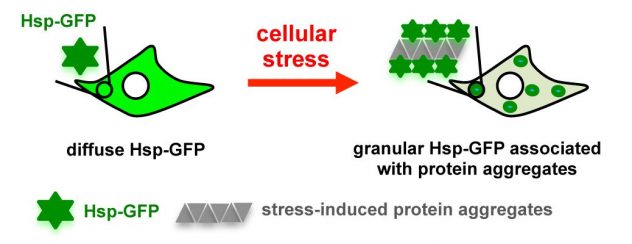 3. M. Fares, Y. Li, Y. Liu, K. Miao‡, Z. Gao‡, Y. Zhai‡ and X. Zhang*, “A molecular rotor-based Halo-tag ligand enables a fluorogenic proteome stress sensor to detect protein misfolding in mildly stressed proteome“, Bioconjutate Chem., 29 (2018), 215-224.
3. M. Fares, Y. Li, Y. Liu, K. Miao‡, Z. Gao‡, Y. Zhai‡ and X. Zhang*, “A molecular rotor-based Halo-tag ligand enables a fluorogenic proteome stress sensor to detect protein misfolding in mildly stressed proteome“, Bioconjutate Chem., 29 (2018), 215-224.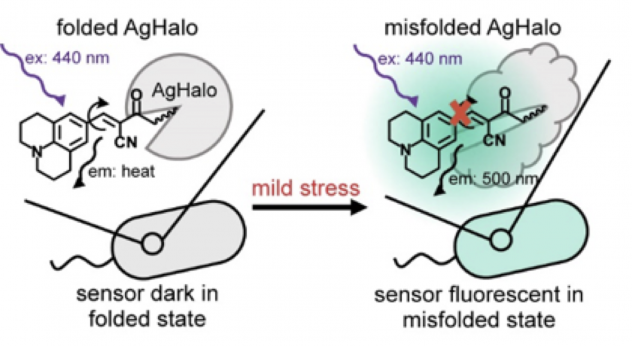 2. Y. Liu, M. Fares, N. P. Dunham, Z. Gao‡, K. Miao‡, X. Jiang, S. S. Bollinger‡, A. K. Boal and X. Zhang*, “AgHalo: A facile fluorogenic sensor to detect drug induced proteome stress“, Angew. Chem. Int. Ed., 56 (2017), 8672-8676.
2. Y. Liu, M. Fares, N. P. Dunham, Z. Gao‡, K. Miao‡, X. Jiang, S. S. Bollinger‡, A. K. Boal and X. Zhang*, “AgHalo: A facile fluorogenic sensor to detect drug induced proteome stress“, Angew. Chem. Int. Ed., 56 (2017), 8672-8676. ![]()

1. Y. Liu, K. Miao‡, N.P. Dunham, H. Liu, M. Fares, X. Li, A.B. Boal and X. Zhang*, “The cation-π interaction enables a Halo-Tag fluorogenic probe for fast no-wash live cell imaging and gel-free protein quantification“, Biochemistry, 56 (2017), 1585-1595, (ACS Editor’s Choice). Featured by Viewpoint in Biochemistry. 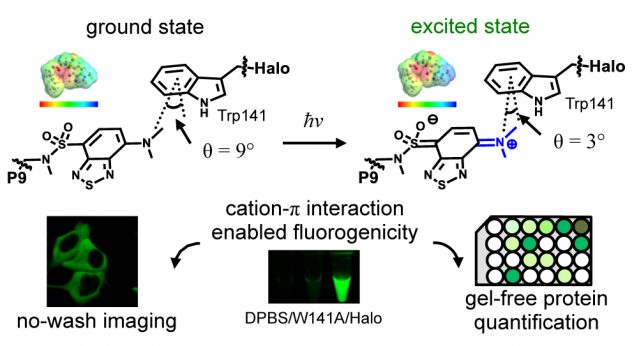
Work prior to Penn State:
36. Y. Liu†, X. Zhang†, W.T. Chen, Y.L. Tan, J.W. Kelly, “Fluorescence turn-on folding sensor to monitor proteome stress in live cells”, J. Am. Chem. Soc., 137 (2015), 11303-11321.
35. Y.H. Cho†, X. Zhang†, Y. Liu, K. Fayer, D.L. Powers, J.W. Kelly, L. Gierasch., E.T. Powers, “Individual and collective contributions of chaperonin and degradation to protein homeostasis in E. coli”, Cell Reports, 11 (2015), 321-33.
34. Y. Liu†, Y.L. Tan†, X. Zhang†*, G. Bhabha, D. Ekiert, J.C. Genereux, Y.H. Cho, Y. Kipnis, D. Baker, J.W. Kelly*, “Small molecule probes to quantify the functional fraction of a specific protein in a cell with minimal folding equilibrium shifts”, Proc. Natl. Acad. Sci. (USA), 111 (2014), 4449-54.
33. X. Zhang, Y. Liu, J.C. Genereux, C. Nolan, M. Singh, J.W. Kelly, “The heat-shock response transcriptional program enables high-yield and high-quality recombinant protein production in Escherichia coli”, ACS Chem. Biol., 9 (2014), 1945-1949. (ACS Editor’s Choice)
32. Y. Liu†, X. Zhang†, Y.L. Tan, G. Bhabha, D. Ekiert, D. Baker, J.W. Kelly, “De novo designed enzymes as small molecule-regulated fluorescence imaging tags and fluorescent reporters”, J. Am. Chem. Soc., 136 (2014), 13102-13105, (*co-first authors). (ACS AuthorChoice)
31. X. Zhang and J.W. Kelly, “Chaperonins resculpt folding free energy landscapes to avoid kinetic traps and accelerate protein folding” J. Mol. Biol., 426 (2014), 2736-8.
30. X. Zhang and S. Shan, “Fidelity of co-translational protein targeting by the signal recognition particle”, Ann. Rev. Biophysics, 43 (2014), 381-408.
29. D. Akopian†, K. Shen†, X. Zhang†, S. Shan, “Signal recognition particle: An essential targeting machine”, Ann. Rev. Biochemistry, 82 (2013), 693-722 (*co-first authors listed alphabetically).
28. Li, X. Zhang, A.R. Ladiwala, D. Du, J. Yadav, P. Tessier, P. Wright, J.W. Kelly, and J. Buxbaum, “Mechanism of transthyretin inhibition of β-amyloid aggregation in vitro”, J. Neuroscience, 33 (2013), 19423-33.
27. von Loeffelholz, K. Knoops, A. Ariosa, X. Zhang, M. Karuppasamy, K. Huard, G. Schoehn, I. Berger, S. Shan, C. Schaffitzel, “Structural basis of signal sequence surveillance and selection by the SRP-FtsY complex”, Nat. Struct. Mol. Biol., 20 (2013), 604-610.
26. X. Liu, W. Wei, Q. Yuan, X. Zhang, N. Li, Y. Du, G. Ma, C. Yan, D. Ma, “Apoferritin–CeO2 nano-truffle that has excellent artificial redox enzyme activity”, Chem. Comm., 48 (2012), 3155-3157.
25. X. Zhang, V.Q. Lam, Y. Mou, T. Kimura, J. Chung, S. Chandrasekar, J.R. Winkler, S.L. Mayo, S. Shan, “Direct visualization reveals dynamics of a transient intermediate during protein assembly”, Proc. Natl. Acad. Sci. (USA),108 (2011), 6450-55.
24. Shen, X. Zhang, S. Shan, “Synergistic actions between the SRP RNA and translating ribosome allow efficient delivery of the correct cargos during co-translational protein targeting”, RNA, 17 (2011), 892–902.
23. M.J. Yang, X. Zhang, “Molecular dynamics simulations reveal structural coordination of Ffh-FtsY heterodimer towards GTPase activation”, Proteins: Struc., Funct., Bioinf., 79 (2011), 1774-85.
22. M.J. Yang, X.Q. Pang, X. Zhang, K.L. Han, “Molecular dynamics simulation reveals preorganization of the Chloroplast FtsY towards complex formation induced by GTP-binding”, J. Struct. Biol., 170 (2011), 57-66.
21. X. Zhang, R. Rashid, K. Wang, S. Shan, “Sequential checkpoints govern substrate selection during co-translational protein targeting”, Science, 328 (2010), 757-60.
20. M.J. Yang, X. Zhang, K.L. Han, “Molecular dynamics simulation of SRP GTPases: towards an understanding of complex formation from equilibrium fluctuations”, Proteins: Struc., Funct., Bioinf., 78 (2010), 2222-37.
19. X. Zhang, C. Schaffitzel, N. Ban, S. Shan, “Multiple conformational switches in a GTPase complex control co-translational protein targeting”, Proc. Natl. Acad. Sci. (USA), 106 (2009), 1754-59.
18. Shan, S. L. Schmid, X. Zhang, “Signal recognition particle (SRP) and SRP receptor: A new paradigm for multi-state regulatory GTPases”, Biochemistry, 48 (2009), 6696-704.
17. E.L. Wu, K. Wong, X. Zhang, K.L. Han, J.L. Gao, “Determination of the structure form of the fourth ligand of zinc in acutolysin A using combined quantum mechanical and molecular mechanical simulation”, J. Phys. Chem. B, 113 (2009), 2477-85.
16. X. Zhang, S. Kung, S. Shan, “Demonstration of a multistep mechanism for assembly of the SRP•SRP receptor complex: Implications for the catalytic role of SRP RNA”, J. Mol. Biol., 381 (2008), 581-93.
15. Zhang and K.L. Han, “High-order symplectic integration in quasi-classical trajectory simulation: Case study for O(1D)+H2“, Int. J. Quant. Chem., 106 (2006), 1815-19.
14. T.S. Chu, X. Zhang, L.P. Ju, L. Yao, K.L. Han, M.L. Wang, J.Z.H. Zhang, “First principles quantum dynamics study reveals subtle resonance in polyatomic reaction: The case of F+CH4 → HF+CH3 ”, Chem. Phys. Lett., 424 (2006), 242-46.
13. X.F. Chen, X. Zhang, K.L. Han, A.J.C. Varandas, “ab initio study of the H+ClONO2 reaction“, Chem. Phys. Lett., 421 (2006), 453-59.
12. L.P. Ju, T.X. Xie, X. Zhang, K.L. Han, “A modified potential energy surface for the C2H+H2 → C2H2+H reaction and a theoretical study on its rate constants“, Chem. Phys. Lett., 409 (2005), 249-54.
11. T.S. Chu, X. Zhang, K.L. Han, “A quantum wave-packet study of intersystem crossing effects in the O(3P, 1D)+H2 reaction“, J. Chem. Phys., 122 (2005), 214301-6.
10. G.H Yang, L. Yao, X. Zhang, Q.T. Meng, K.L. Han, “Theoretical study of the mechanism of spin-forbidden quenching process O(1D)+CO2 (1Sg+) → O(3P)+CO2 (1Sg+)”, Int. J. Quant. Chem., 105 (2005), 1313-16.
9. C.L. Yang, X. Zhang, K.L. Han, “Theoretical study on analytical potential function and spectroscopic parameters for CaF molecule“, J. Mol. Struct-Theochem, 678 (2004), 183-88.
8. C.L. Yang, X. Zhang, K.L. Han, “ab initio geometries, electronic structures of MgB2 molecule“, J. Mol. Struct-Theochem, 677 (2004), 11-14.
7. C.L. Yang, X. Zhang, K.L. Han, “Analytical potential energy function and spectroscopic parameters for the ground and excited states of NaH”, J. Mol. Struct-Theochem, 767 (2004), 209-13.
6. G.H. Yang, X. Zhang, Q.T. Meng, K.L. Han, “Theoretical studies on the intermediate complex mechanism of the energy transfer reaction of O(1D)+CO2 (1Sg+) → O(3P)+CO2 (1Sg+)”, Chem J Chin Univ, 25 (2004), 689-92.
5. G.H. Yang, Q.T. Meng, X. Zhang, K.L. Han, “Theoretical study on the formation mechanism of Iso-CH2l-Cl”, Int. J. Quant. Chem., 97 (2004), 719-24.
4. X. Zhang, G.H. Yang, K.L. Han, M.L. Wang, J.Z.H. Zhang, “Quantum dynamics study of isotope effect for H + CH4 reaction using the SVRT model“, J. Chem. Phys., 118 (2003), 9266-71.
3. C.L. Yang, Y.J. Huang, X. Zhang, K.L. Han, “MRCI potential curve and analytical potential energy function of the ground state of H2”, J. Mol. Struct-Theochem, 625 (2003), 289-93.
2. X. Zhang, K.L. Han, J.Z.H. Zhang, “SVRT calculation for bond-selective reaction H+HOD → H2+OD, HD+OH“, J. Chem. Phys., 116 (2002), 10197-200.
1. X. Zhang, T.X. Xie, M.Y. Zhao, K.L. Han, “Quasiclassical trajectory simulation of the chemical reaction Ba+HF (n, J) → BaF (n‘, J‘)+H”, Chin J Chem Phys, 15 (2002), 169-74.

